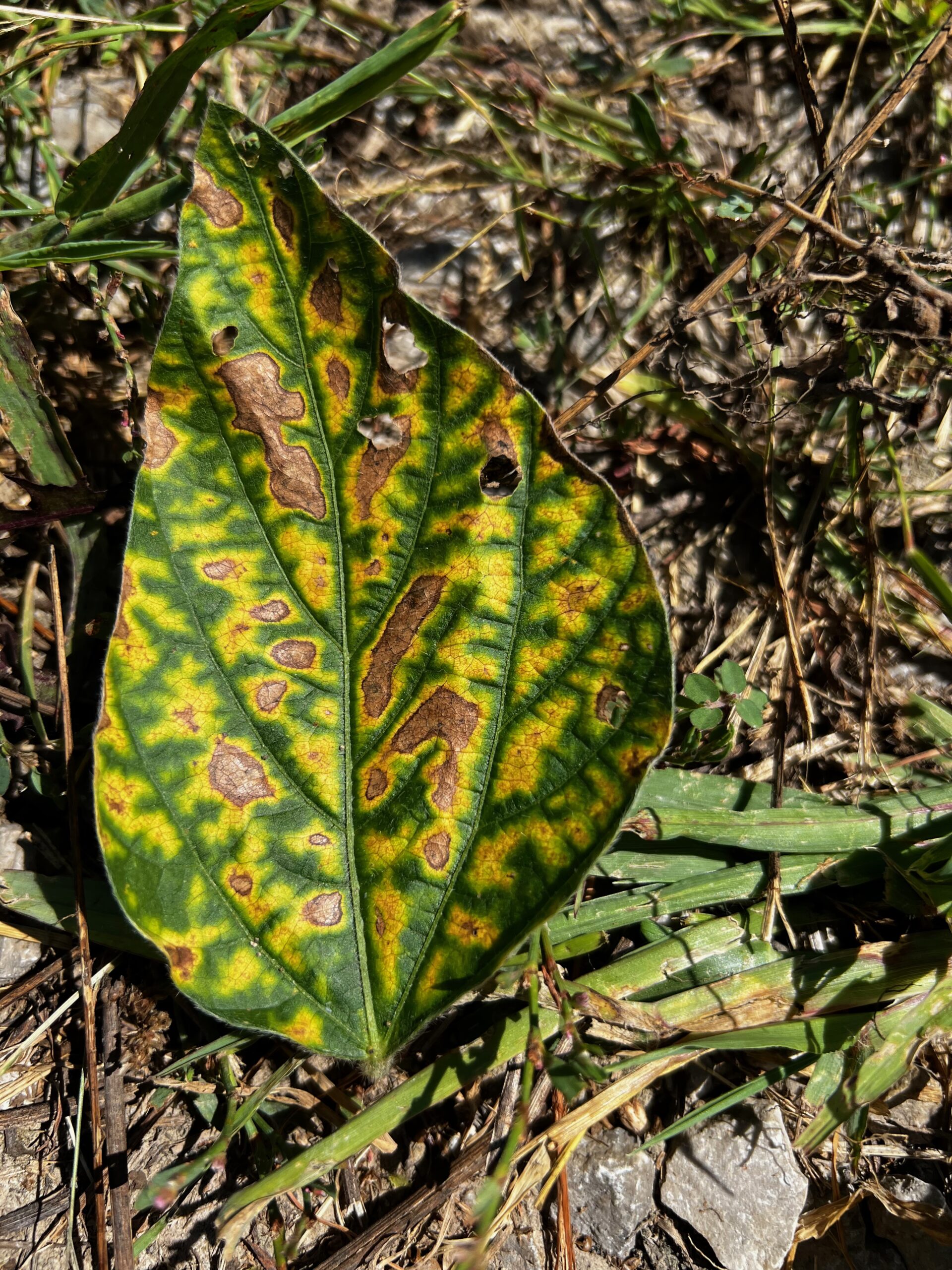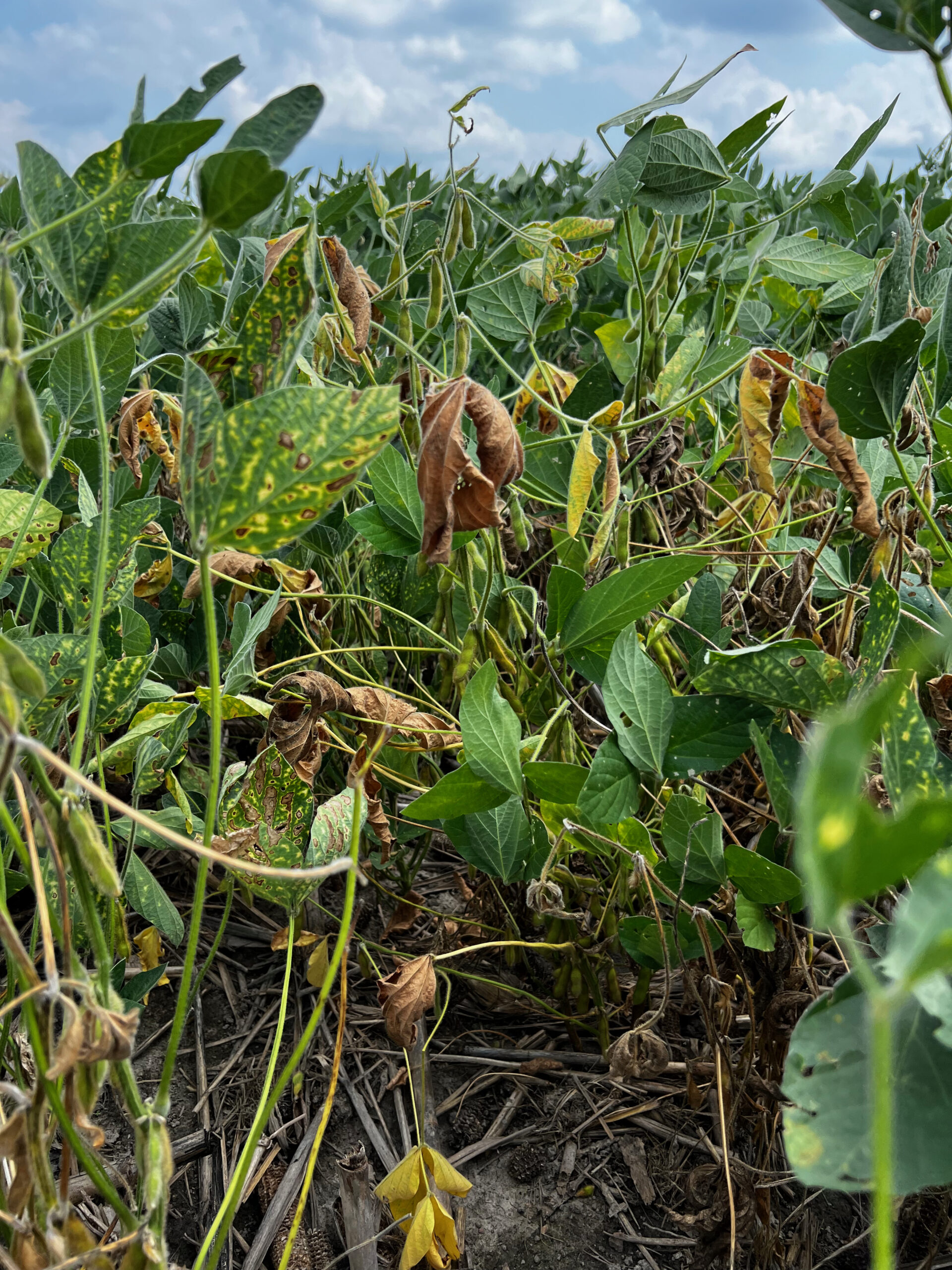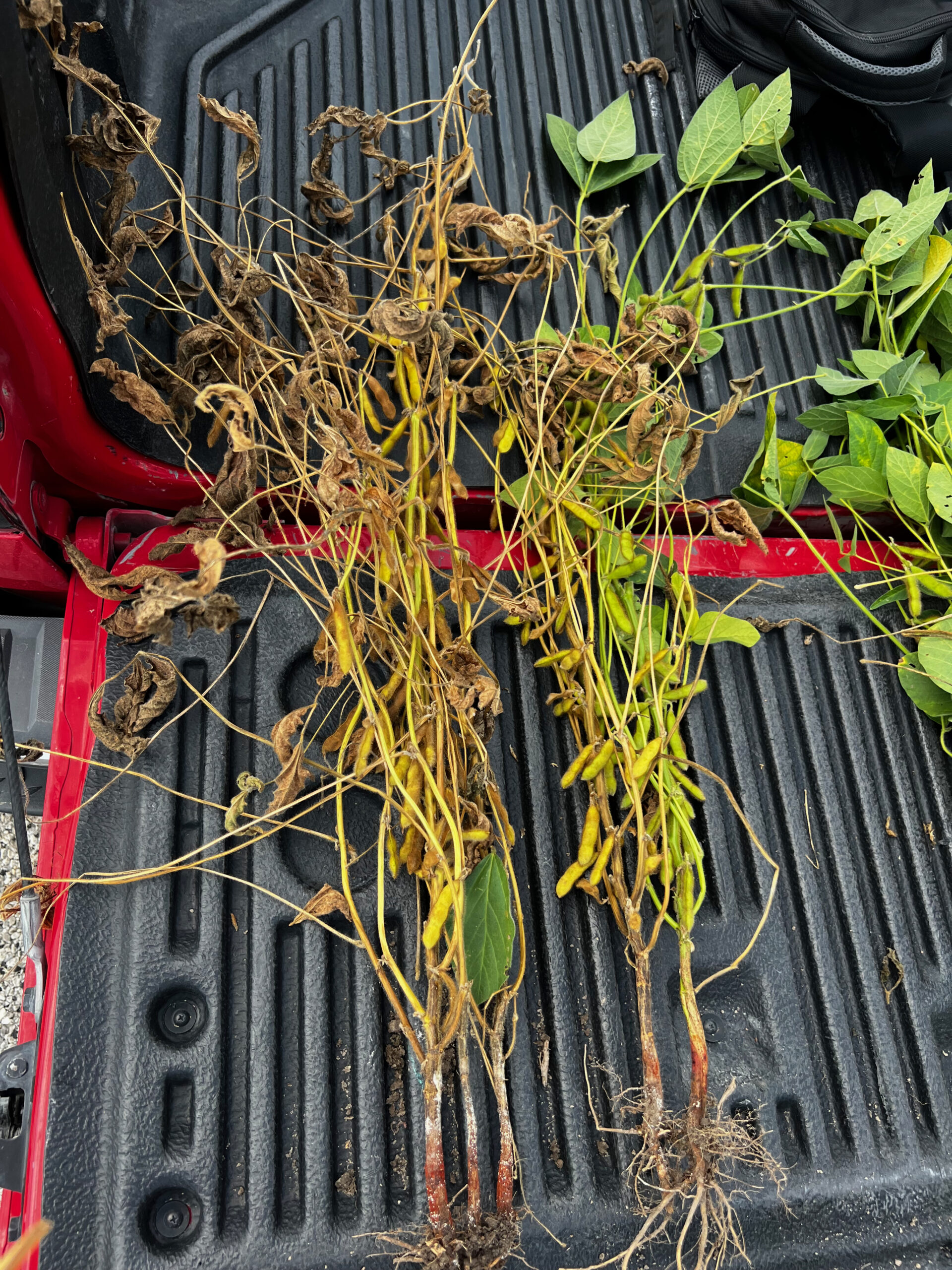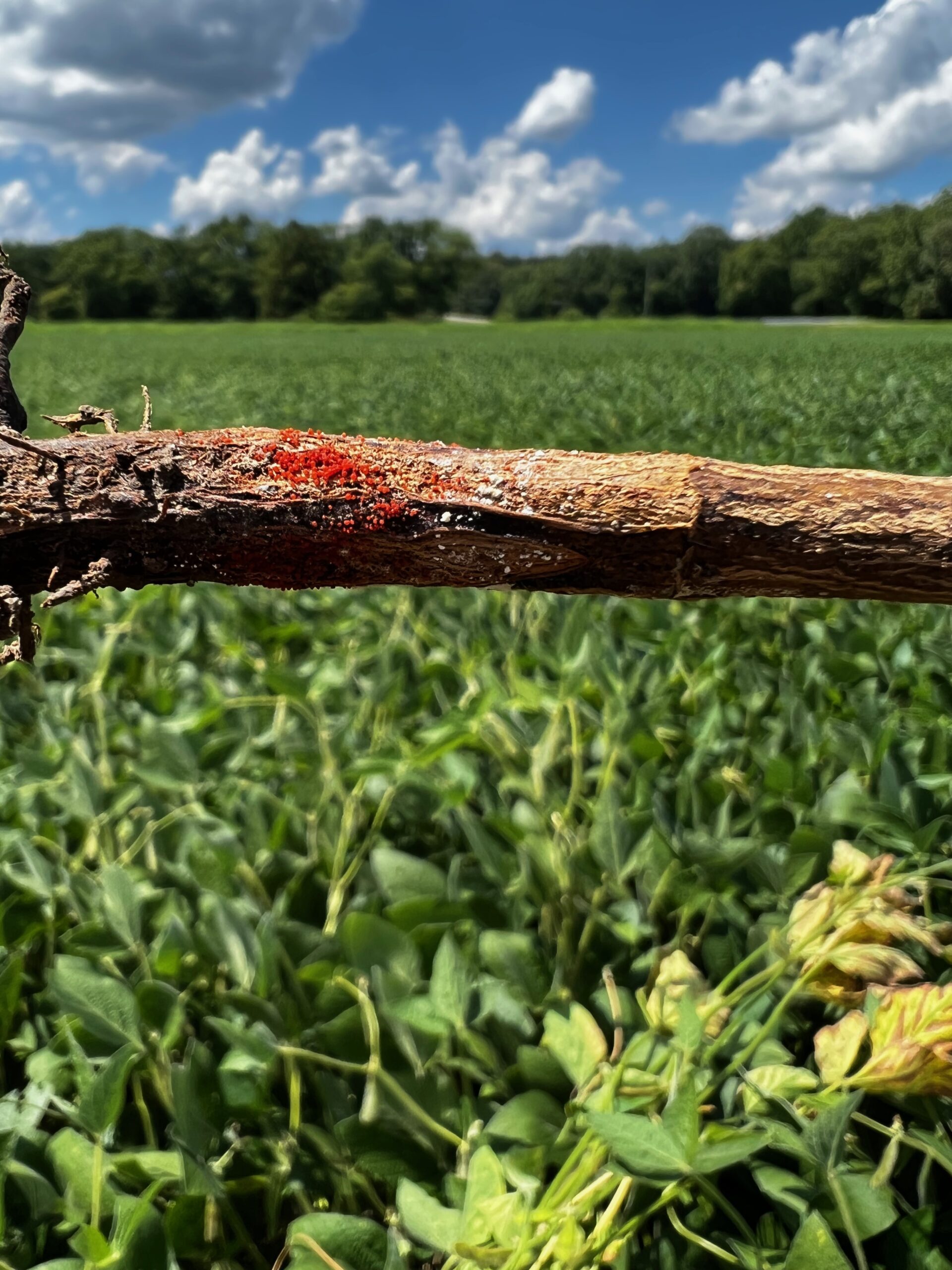USDA ARS has been researching the emerging soybean disease known as red crown rot (RCR) by trying to characterize the diversity of RCR pathogen isolates across the region. If you suspect that you have RCR and would like confirmation, as well as to assist the research by providing possible new isolates, please consider sending diseased samples to the USDA-ARS lab in Urbana.
Your samples will be greatly appreciated as you will be assisting researchers to continue to monitor and find new Illinois counties where this pathogen has spread. Instructions on how to submit a sample will be provided below, but first, let’s explore some background information on red crown rot.
Many USDA ARS and university researchers across several states are working together to understand RCR caused by the fungus Calonectria ilicicola. Occurrence of RCR was first reported on soybean in the United States in 1972 in the southeast, but the disease was reported in 2018 to be found on Illinois soybean. However, because the foliar symptoms resemble SDS, it might have been present longer and people didn’t realize it.
Photos provided by Steve Clough, USDA-ARS
Red crown rot is caused by a soil-borne fungus that seems to mainly infect the root system, leading to root rot, crown rot, crown reddening, and yellowing and necrosis of the leaves. Symptoms are usually not very apparent until around the R3 growth stage. The fungus produced toxin starts affecting the leaves causing interveinal necrosis or yellow blotches between veins. These leaf symptoms and eventual wilting resemble SDS but the most distinguishing sign of RCR is the reddish coloration at the base of the stem, and the possible presence of small reddish globules (about the size of poppy seeds) which are fungal reproductive structures called perithecia. The red discoloration darkens as plants mature and perithecia fall off.
Photos provided by Steve Clough, USDA-ARS
Please assist researchers studying this new disease by helping them collect samples and letting them know approximately where samples were collected. One aspect of the analyses is to document its spread and characterize its diversity, so we need samples from many different locations across the state. Samples only need to the infected crown region, as the fungus does not appear to colonize upper parts of the plant. Individual samples can be placed in a plastic bag and kept cool until you can ship.
Here is how to submit a possible RCR sample:
Send an email to Dr. Steven Clough at steven.clough@usda.gov letting him know that you have samples suspected to be RCR and include your mailing address.
After this email is received by Dr. Clough, his group will mail you a USPS Priority envelope that includes a mailing label and pre-paid stamp.
You can put your sample in this mailer and drop it off at the post office. Soybean samples should be kept cool and shipped early in the week. Wrap the roots with paper towels and place in a small plastic bag. Please include a piece of paper with sample info in each sample bag or write the description on each bag with a marker If sending multiple soybean samples, please place one sample per plastic bag.
Please email or include the following information for each sample on a piece of paper within the bag or write on the sample bag:
- Field location (GPS coordinates or landmarks)
- Town/Township and County (and state, if not IL)
- Name
- Email or Phone
Once the samples are received, the lab will do preliminary PCR with primers that are expected to be specific to Calonectria ilicicola, and let the grower know as soon as possible if the sample is RCR positive or negative. Whether the PCR is positive or negative, they will still attempt to culture the sample to grow out the pathogen, to confirm the positive or negative result. Keep in mind that the purification of the pathogen is a long process, so please allow extra time for their lab to provide a report.







 and then
and then